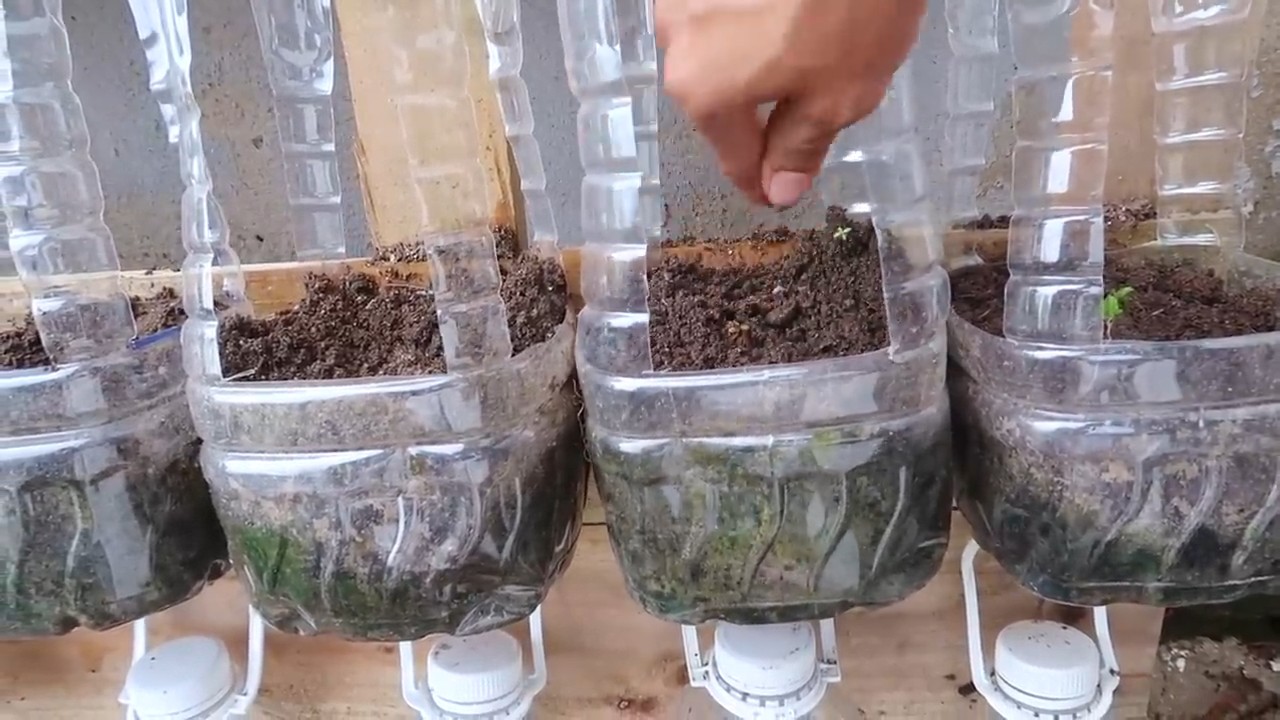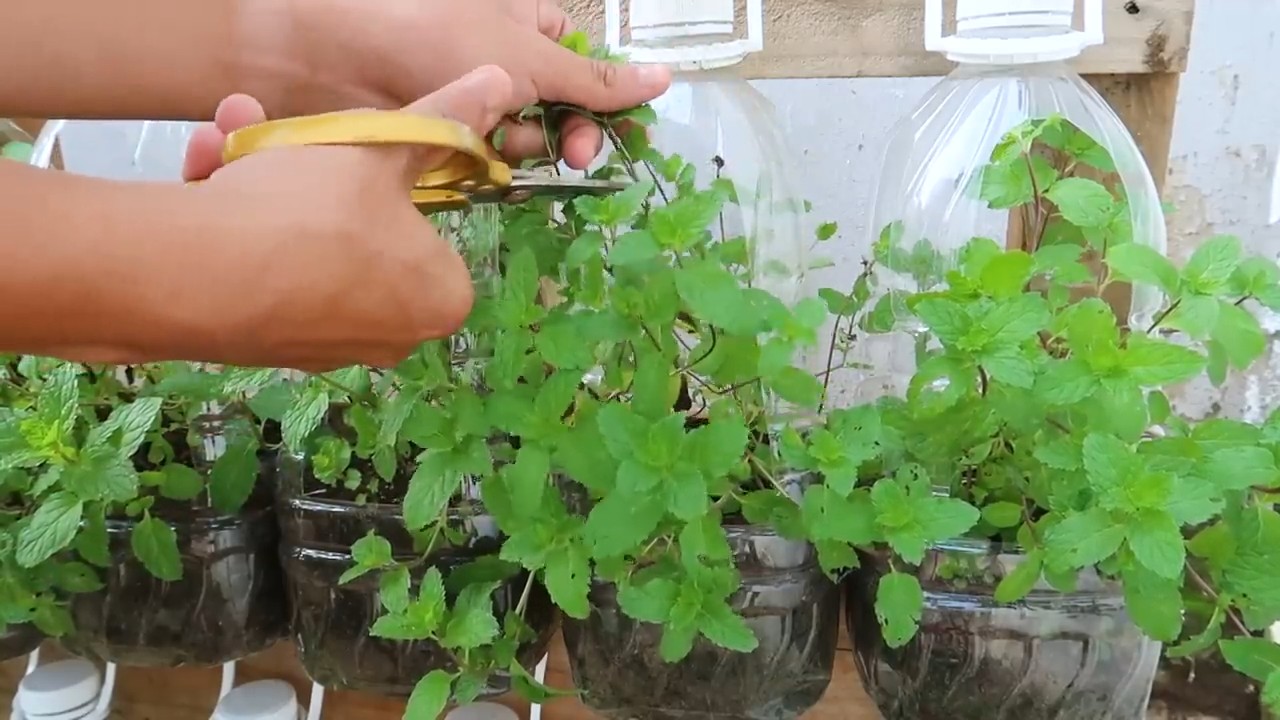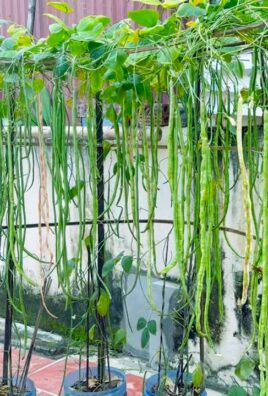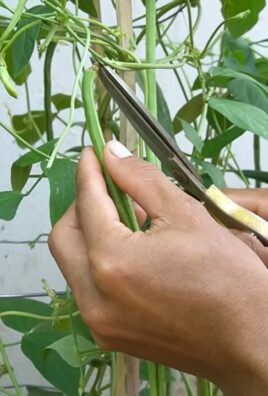Growing mint at home can be incredibly rewarding, filling your kitchen with its invigorating aroma and providing fresh leaves for countless culinary creations. But let’s be honest, sometimes that little sprig you brought home from the grocery store seems determined to take over your entire garden! Have you ever wondered how to keep your mint contained and thriving without turning your backyard into a mint jungle?
Mint has a rich history, dating back to ancient civilizations where it was valued for its medicinal and aromatic properties. The Romans even used it to freshen the air and flavor their sauces! Today, we still appreciate mint for its versatility, but its vigorous growth habit can be a real challenge. That’s where our DIY tricks come in handy.
I’m going to share some simple, effective, and budget-friendly methods to help you master growing mint at home. These aren’t just gardening tips; they’re game-changers that will save you time, prevent headaches, and ensure you have a constant supply of fresh mint whenever you need it. Whether you’re a seasoned gardener or just starting out, these hacks will empower you to cultivate a thriving mint patch without the worry of it taking over your entire garden. Let’s dive in and unlock the secrets to mint-growing success!

Growing Mint Like a Pro: A DIY Guide to a Bountiful Harvest
Hey there, fellow plant enthusiasts! I’m so excited to share my secrets to growing mint at home. Mint is one of the easiest and most rewarding herbs to cultivate, and having a fresh supply right at your fingertips is a game-changer for everything from mojitos to homemade teas. Trust me, once you start growing your own, you’ll never go back to store-bought again!
Why Grow Mint?
Before we dive in, let’s quickly cover why growing mint is so awesome:
* Flavor Explosion: Fresh mint has a vibrant, intense flavor that dried mint just can’t match.
* Versatility: Mint is incredibly versatile. Use it in drinks, desserts, savory dishes, and even as a natural insect repellent.
* Easy to Grow: Seriously, mint is practically foolproof. It’s a vigorous grower and can thrive in a variety of conditions.
* Cost-Effective: Buying fresh mint regularly can get expensive. Growing your own saves you money in the long run.
* Aromatic Delight: The scent of fresh mint is incredibly refreshing and can uplift your mood.
Choosing Your Mint Variety
There are tons of different mint varieties to choose from, each with its own unique flavor and aroma. Here are a few popular options:
* Peppermint: Classic mint flavor, perfect for teas and desserts.
* Spearmint: Milder and sweeter than peppermint, great for mojitos and savory dishes.
* Chocolate Mint: A delightful combination of mint and chocolate flavors, ideal for desserts.
* Apple Mint: Fruity and refreshing, adds a unique twist to drinks and salads.
* Pineapple Mint: Tropical and sweet, perfect for adding a summery touch to your recipes.
I personally love growing a mix of peppermint and spearmint, but feel free to experiment and find your favorites!
Materials You’ll Need
Before we get started, gather these supplies:
* Mint Cuttings or Seedlings: You can purchase these from a local nursery or propagate your own from existing plants.
* Potting Soil: Choose a well-draining potting mix that’s rich in organic matter.
* Pots or Containers: Make sure they have drainage holes to prevent waterlogging.
* Watering Can or Hose: For regular watering.
* Gardening Gloves (Optional): To keep your hands clean.
* Pruning Shears or Scissors: For harvesting and trimming.
* Fertilizer (Optional): A balanced liquid fertilizer can help boost growth.
Step-by-Step Guide to Growing Mint in Pots
Okay, let’s get our hands dirty! Here’s my foolproof method for growing mint in pots:
1. Preparing Your Pots
* Choose the Right Size: Select pots that are at least 6 inches in diameter and depth. Mint can spread quickly, so larger pots are generally better.
* Ensure Drainage: Make sure your pots have drainage holes at the bottom. This is crucial for preventing root rot.
* Add Potting Soil: Fill the pots with your chosen potting mix, leaving about an inch of space at the top.
2. Planting Your Mint
* From Cuttings: If you’re starting with cuttings, dip the cut end in rooting hormone (optional) and plant them about 2 inches deep in the soil. Space them a few inches apart.
* From Seedlings: Gently remove the seedlings from their containers and loosen the roots slightly. Plant them in the pots, spacing them a few inches apart.
* Water Thoroughly: After planting, water the soil thoroughly until water drains out of the bottom of the pots.
3. Choosing the Right Location
* Sunlight: Mint thrives in partial shade to full sun. Aim for at least 4-6 hours of sunlight per day.
* Temperature: Mint prefers temperatures between 60°F and 70°F (15°C and 21°C).
* Protection: Protect your mint plants from strong winds and extreme temperatures.
4. Watering and Feeding
* Watering: Water your mint plants regularly, keeping the soil consistently moist but not waterlogged. Check the soil moisture by sticking your finger about an inch deep. If it feels dry, it’s time to water.
* Fertilizing: Feed your mint plants with a balanced liquid fertilizer every 2-4 weeks during the growing season (spring and summer). Follow the instructions on the fertilizer label.
5. Pruning and Harvesting
* Pruning: Prune your mint plants regularly to encourage bushier growth and prevent them from becoming leggy. Pinch off the top leaves and stems.
* Harvesting: You can start harvesting mint leaves as soon as the plants are established. Simply snip off the leaves or stems as needed. For a larger harvest, cut back the entire plant to a few inches above the soil. It will quickly regrow.
* Deadheading: Remove any flowers that appear on your mint plants. Flowering can reduce the flavor of the leaves.
6. Dealing with Pests and Diseases
* Pests: Mint is generally pest-resistant, but it can occasionally be affected by aphids, spider mites, or whiteflies. Treat infestations with insecticidal soap or neem oil.
* Diseases: Root rot is the most common disease affecting mint. Prevent it by ensuring good drainage and avoiding overwatering.
Tips and Tricks for Mint-Growing Success
Here are a few extra tips to help you grow the best mint ever:
* Containment is Key: Mint is notorious for spreading aggressively. If you’re planting it in the ground, consider using a barrier to prevent it from taking over your garden. Pots are your best friend!
* Don’t Be Afraid to Prune: Regular pruning is essential for keeping your mint plants healthy and productive.
* Propagate Easily: Mint is incredibly easy to propagate from cuttings. Simply snip off a stem, place it in water, and wait for roots to develop.
* Overwintering: In colder climates, you can overwinter your mint plants indoors. Bring the pots inside before the first frost and place them in a sunny location.
* Enjoy Your Harvest: Experiment with different ways to use your fresh mint. Add it to drinks, desserts, salads, sauces, and more!
Troubleshooting Common Mint Problems
Even with the best care, you might encounter a few issues. Here’s how to troubleshoot them:
* Yellowing Leaves: This could be a sign of overwatering, underwatering, or nutrient deficiency. Adjust your watering schedule and fertilize if needed.
* Leggy Growth: This is usually caused by insufficient sunlight. Move your mint plants to a sunnier location.
* Small Leaves: This could be due to lack of nutrients or water. Fertilize and water regularly.
* Pests: Treat infestations promptly with insecticidal soap or neem oil.
Harvesting and Storing Your Mint
Now that you’ve grown a beautiful mint plant, let’s talk about harvesting and storing your bounty:
* Harvesting: The best time to harvest mint is in the morning, after the dew has dried. This is when the leaves are most flavorful.
* Fresh Storage: To store fresh mint, wrap the stems in a damp paper towel and place them in a plastic bag in the refrigerator. It should last for about a week.
* Drying: To dry mint, hang the stems upside down in a cool, dry, and well-ventilated place. Once the leaves are completely dry, crumble them and store them in an airtight container.
* Freezing: You can also freeze mint leaves. Wash and dry the leaves, then spread them out on a baking sheet and freeze them. Once frozen, transfer them to a freezer bag.
Creative Ways to Use Your Homegrown Mint
Okay, this is the fun part! Here are some of my favorite ways to use fresh mint:
* Mint Tea: Steep fresh mint leaves in hot water for a refreshing and soothing tea.
* Mojitos: Muddle mint leaves with lime juice, sugar, and rum for a classic mojito.
* Mint Juleps: Muddle mint leaves with sugar and bourbon for a traditional mint julep.
* Salads: Add chopped mint to salads for a burst of fresh flavor.
* Sauces: Use mint in sauces for lamb, chicken, or fish.
* Desserts: Add mint to chocolate desserts, ice cream, or fruit salads.
* Infused Water: Add mint leaves to water for a refreshing and hydrating drink.
* Garnish: Use mint sprigs as a garnish for cocktails, desserts, and savory dishes.
Growing

Conclusion
So, there you have it! Growing mint at home isn’t just a whimsical gardening project; it’s a practical, aromatic, and surprisingly simple way to elevate your culinary creations, enhance your beverages, and even boost your well-being. From the vibrant burst of fresh mint in your summer cocktails to the soothing comfort of a homemade mint tea on a chilly evening, the possibilities are truly endless.
Why is this DIY trick a must-try? Because it puts the power of fresh, flavorful mint right at your fingertips, eliminating the need for expensive store-bought bunches that often wilt before you even get a chance to use them. Imagine the satisfaction of snipping off exactly the amount of mint you need, knowing it’s bursting with flavor and free from any unwanted chemicals. Plus, growing your own mint is a sustainable choice, reducing your reliance on commercially grown produce and minimizing your environmental impact.
But the benefits extend beyond the culinary realm. The simple act of tending to a plant, nurturing it, and watching it thrive can be incredibly therapeutic. The invigorating scent of mint is known to have mood-boosting properties, helping to alleviate stress and promote relaxation. And let’s not forget the sheer beauty of a lush, green mint plant adorning your windowsill or garden.
Don’t be afraid to experiment with different varieties of mint to discover your personal favorites. Peppermint, spearmint, chocolate mint, and even apple mint each offer a unique flavor profile that can add a distinctive touch to your dishes and drinks. Consider planting them in separate containers to prevent them from cross-pollinating and to keep their flavors distinct.
For those with limited space, container gardening is an excellent option. A simple pot on a sunny balcony or windowsill is all you need to get started. Just be sure to choose a pot with adequate drainage and use a well-draining potting mix.
And for the more adventurous gardeners, consider incorporating mint into your landscape design. Its fragrant foliage and attractive flowers can add a touch of charm to any garden. Just remember to keep it contained, as mint has a tendency to spread aggressively.
We wholeheartedly encourage you to give this DIY trick a try. It’s a rewarding experience that will bring joy, flavor, and a touch of green into your life. Once you’ve harvested your first batch of homegrown mint, we’d love to hear about your experience. Share your photos, recipes, and tips in the comments below. Let’s create a community of mint-loving gardeners and inspire others to discover the joys of growing their own herbs. Embrace the freshness, savor the flavor, and experience the satisfaction of growing mint at home. You won’t regret it!
Frequently Asked Questions (FAQ)
1. Is growing mint at home really that easy? I don’t have a green thumb!
Absolutely! Mint is known for being a very forgiving and resilient plant. It’s often considered one of the easiest herbs to grow, even for beginners. As long as you provide it with adequate sunlight, water, and well-draining soil, you should have no problem growing a thriving mint plant. Don’t be intimidated! Start small, follow the basic guidelines, and you’ll be surprised at how quickly your mint will flourish.
2. What kind of soil is best for growing mint?
Mint prefers well-draining soil that is rich in organic matter. A good quality potting mix will work perfectly for container-grown mint. If you’re planting mint in the ground, amend the soil with compost or other organic matter to improve drainage and fertility. Avoid heavy clay soils, as they can become waterlogged and lead to root rot. The ideal pH for mint is between 6.0 and 7.0.
3. How much sunlight does mint need?
Mint thrives in partial shade to full sun. Ideally, it should receive at least 4-6 hours of sunlight per day. However, in hotter climates, it’s best to provide some afternoon shade to prevent the leaves from scorching. If you’re growing mint indoors, place it near a sunny window or supplement with a grow light.
4. How often should I water my mint plant?
Water your mint plant regularly, especially during hot, dry weather. The soil should be kept consistently moist, but not waterlogged. Check the soil moisture by sticking your finger into the soil. If the top inch feels dry, it’s time to water. Avoid overwatering, as this can lead to root rot.
5. My mint plant is spreading everywhere! How can I control it?
Mint is notorious for its aggressive spreading habit. If you’re planting mint in the ground, it’s essential to contain it to prevent it from taking over your garden. The easiest way to do this is to plant it in a container or raised bed. You can also bury a barrier around the planting area, such as a plastic or metal edging, to prevent the roots from spreading.
6. Can I grow different varieties of mint together?
While it’s possible to grow different varieties of mint together, it’s generally not recommended. Mint varieties can cross-pollinate, which can result in unpredictable flavors and characteristics. To maintain the distinct flavors of each variety, it’s best to plant them in separate containers.
7. How do I harvest mint?
Harvest mint by snipping off the stems just above a leaf node. This will encourage the plant to produce new growth. You can harvest mint throughout the growing season, as needed. For the best flavor, harvest mint in the morning, after the dew has dried.
8. How do I store fresh mint?
Freshly harvested mint can be stored in the refrigerator for up to a week. To keep it fresh, wrap the stems in a damp paper towel and place them in a plastic bag or container. You can also freeze mint for longer storage. To freeze mint, chop it up and place it in ice cube trays with water. Once frozen, transfer the mint cubes to a freezer bag.
9. What are some common uses for mint?
Mint is a versatile herb that can be used in a variety of culinary and medicinal applications. It’s commonly used to flavor beverages, such as tea, lemonade, and cocktails. It’s also a popular ingredient in desserts, salads, and savory dishes. Mint is also known for its medicinal properties and is often used to relieve digestive issues, headaches, and congestion.
10. My mint plant has pests! What should I do?
Mint is generally resistant to pests, but it can occasionally be affected by aphids, spider mites, or whiteflies. If you notice any pests on your mint plant, try spraying it with a strong stream of water to dislodge them. You can also use an insecticidal soap or neem oil to control pests. Be sure to follow the instructions on the product label carefully.




Leave a Comment